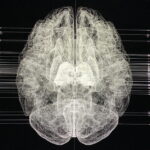In this post I will outline some of the key artists I have researched, who feature aspects of unconventional mixed media, collage, photography and sketch work in their art from the Dada period of the 1920s. These artists also share the common aim of depicting everyday objects as pieces of art in their own right, which I aim to incorporate when looking at scrap objects and items of ‘junk’.
 Marcel Duchamp, ‘The Bride Stripped Bare by her Bachelors, Even’ 1915-23.
Marcel Duchamp, ‘The Bride Stripped Bare by her Bachelors, Even’ 1915-23.
Duchamp remains notorious for his development and effective exploration of ‘the readymades’, which consisted of ordinary objects which were reconstructed, repositioned or displayed as art. This piece is a prime example of art which intended to present everyday objects as art in their own right. At the time of creation, this work was intended to display the practicality and potential of unconventional objects as materials for artworks. This piece expresses and reflects Duchamp’s intent to overcome the common misconception that art should be contained to materials such as paint and sketch works, and that items which were often used for practical purposes could be reconstructed to form art. In this case, ‘The Bride stripped Bare’ features two glass panels stacked on top of one another, within which are placed materials of wire, foil, glue and varnish. The interpretation of this composition evokes a number of themes, in particular ideas of sexual frustration, erotic desire, and mechanical processes.
The materials and processes used by Duchamp in this work evoked my initial fascination with the concept of repurposing and reconstruction, especially in using materials which are usually deemed unconventional in composing artwork. From this, the idea of incorporating an object, or collection of objects of ‘scrap’ or ‘junk’, in particular broken furniture or ceramics, became a baseline for my ‘Found Object’ project.
 Tony Cragg, ‘Stack’ 1975.
Tony Cragg, ‘Stack’ 1975.
In researching further the concept of incorporating ‘junk’ or ‘scrap’ materials into an artwork, I discovered ‘Stack’ by Tony Cragg, completed in 1975. This composition features a perfectly shaped cube, with this symmetry and perfection contrasted by the materials of miscellaneous objects which compose it. These materials include slacks of wood, bricks, crates, resulting in a resemblance to a “cross-section view of long-forgotten, buried rubbish.”
In response to this piece, I researched junkyards to visit in Edinburgh, in which I could then photograph objects of ‘junk’, in order to produce a mixed media piece, incorporating these objects alongside materials such as paint and sketching.


Mark Bradford, ‘Gatekeeper’, 2019.
Mark Bradford, although not classified as a ‘Dada’ artist, or specifically known as working with ‘readymades’, does reflect in his artwork, processes and intentions which resonated with my initial ideas for this project. The aspect of Bradford’s work which fascinated me was the process through which he creates his large-scale, mixed media collage pieces. His pieces are composed of multiple layers of everyday materials such as semi-permanent papers, newspapers and prints, which have been layered over a stretched canvas, and sealed using shellac. Bradford then attacks the composition with power objects and tools such as water and brushes, revealing juxtapositions and contrasts between layers and colours. This then creates compositions which could be interpreted in a variety of ways.
In relation to my project, I view Bradford’s work as embodying feelings of chaos and anarchy, whilst simultaneously producing a composition which can be interpreted as resembling cityscapes, or even a junkyard full of scrap materials. I also was fascinated by Bradford’s methods, and how he manipulates everyday materials of paper and newspaper to create a powerful and almost intimidating composition. This therefore encouraged me to explore mixed-media collages within my project, whilst focusing on the central theme of objects of scrap or junk.




